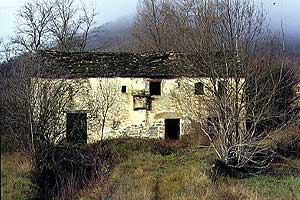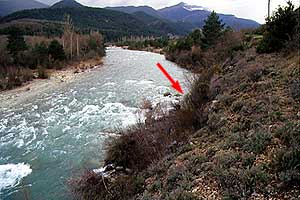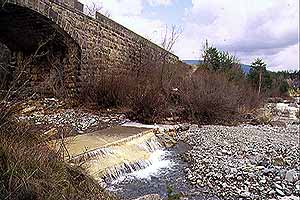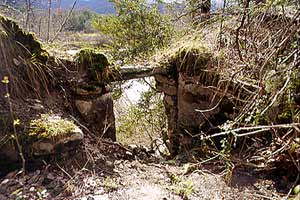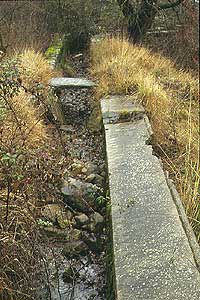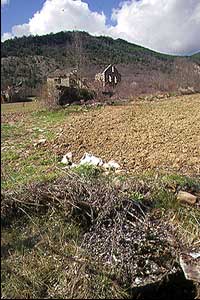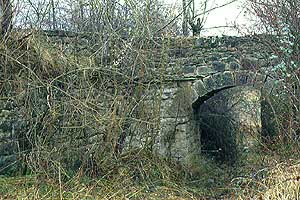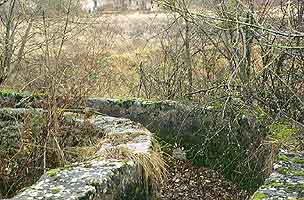Path: Introduction -
Visit the mills; catalogue - Lacort

Mills in Altoaragón - harinero, central eléctrica
Lacort

Find Lacort on the road between
and .
Coming from Broto, pass and
from then on look out for the suspension bridge.
Lacort is on your left side. The flour mill is about
half way between the road and the river opposite the village.
The mill got its water from the Río Ara.
The mill got its water from the Río Ara.
Pictures: xii.1989, xii.1995 and iv.2007
